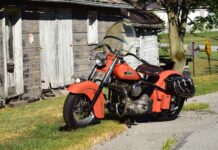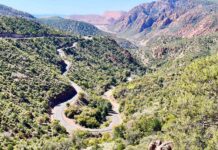Engineered for success
The motorcycle industry is a fluid business, constantly changing and evolving due to current trends in styling, slick marketing ploys and even riders’ self-perception—stock bikes being modified to stretched choppers giving way to big-wheel production models, with baggers being the current rage. Keeping abreast of these changes in riders’ impulses is a monumental task requiring quick adaptability and sharp intuition. We reached out to a highly respected leader in the industry for some insight on their continued success—Cobra U.S.A.
In the late ’70s a chance encounter on the racetrack between Tim McCool and Ken Boyko resulted in one the most successful partnerships in the history of aftermarket parts. Initially building high-performance and replacement exhaust systems for ATVs, Cobra soon expanded into exhausts for street bikes. As customer demand for their products continued to soar over the years, Cobra was forced to move into increasingly larger facilities. And then in 2001, they built the mother of all manufacturing plants in Yorba Linda, California. The 85,000-square-foot building (that’s almost two football fields) has allowed Cobra to streamline its production processes and deliver their product much quicker.

Camron Bussard, vice president of marketing and sales told THUNDER PRESS that from the beginning, Cobra was established as a functional manufacturing company with “tangible items that made a motorcycle better to enhance the riding experience. The end result must be a better motorcycle.” And while many aftermarket manufacturers are content to only produce one particular product, Cobra has since expanded into fuel management systems, air intakes and a variety of accessories including floorboards, sissy bars, luggage racks, light bars, and spot lamps. The motivation for this move was explained earlier—to enhance the experience.
With a facility this large, very little is outsourced. Cobra maintains a department that die stamps the exhaust using multi-ton presses. Any torching requirements are handled by a CNC laser while all exhaust systems are robotically welded. Although the circuit boards for the company’s very popular Fi2000 digital fuel management systems are produced by an outside source, they are assembled under the Cobra roof. The process is a unique blend of state-of-the-art manufacturing technology and hands-on craftsmanship. And with the unceasing need for new products, without question you must have an in-house engineering department. Once you have perfected those new designs, the need for an in-house intellectual property (IP) department comes into play to ensure the design is not stolen.
One such intellectual property item is Cobra’s PowrPort. Available on the Speedster line of exhaust systems, the PowrPort connects the front and rear headers with a crossover pipe improving exhaust scavenging. The design increases performance similar to a 2-into-1 system while maintaining the styling of a 2-into-2 system. Another revolutionary product is the company’s PowrPro Black Tuner. This is a fuel management system that uses an app via a smart device for any adjustments. Plus it self-adjusts during acceleration. According to Bussard this is the next evolution in motorcycle tuning.

Cobra’s accessory line continues to expand and includes a lot of material for the metric market also. The company’s light bars are a great way to add additional illumination by installing Cobra spotlights. Some fitments come with company-produced turn signals while other models repurpose the OEM units. Still other models leave the stock turn signals in place and allow positioning of the light bar either above or below. Cobra’s luggage racks come in three options—a tubular steel model, one laser-cut from plate, and one formed and welded from solid bar. The company’s sissy bars come in either solid rectangular or solid round bar and are available in several different heights according to material selected. Backrest pads are also available along with laser-cut steel backrest inserts that include Tribal, Swept and American Flag designs. Cobra offers two sizes of their Freeway Bars engine guards, the standard at 1 ¼” diameter and the Fatty at 1 ½”.
Cobra’s PowrFlo Air Intake System is a sleek unit using a polished aluminum outer cover. It comes with a K&N filter that has an exclusive molded-in venturi that matches a machined aluminum velocity stack for an increased air vortex flow and optimized power. Cobra’s line of floorboards began with passenger floorboards for those models of bikes that only offered footpegs. Since then they have grown the product line to include matching rider floorboards.

When asked about the challenge of keeping pace alongside Harley’s plans to build 50 new models over the next five years, Camron responded that they are up to the task. “Harley’s shift in thinking to focus on new rider development is a big change and very important to the industry.”
Cobra U.S.A. does not preach a gloom-and-doom view of the future for motorcycling as many in the business currently do but carries an attitude that needs to be heard more and repeated often. “We’ve been doing this for 40 years and we plan on doing it for another 40 years. We are a legacy.”


















